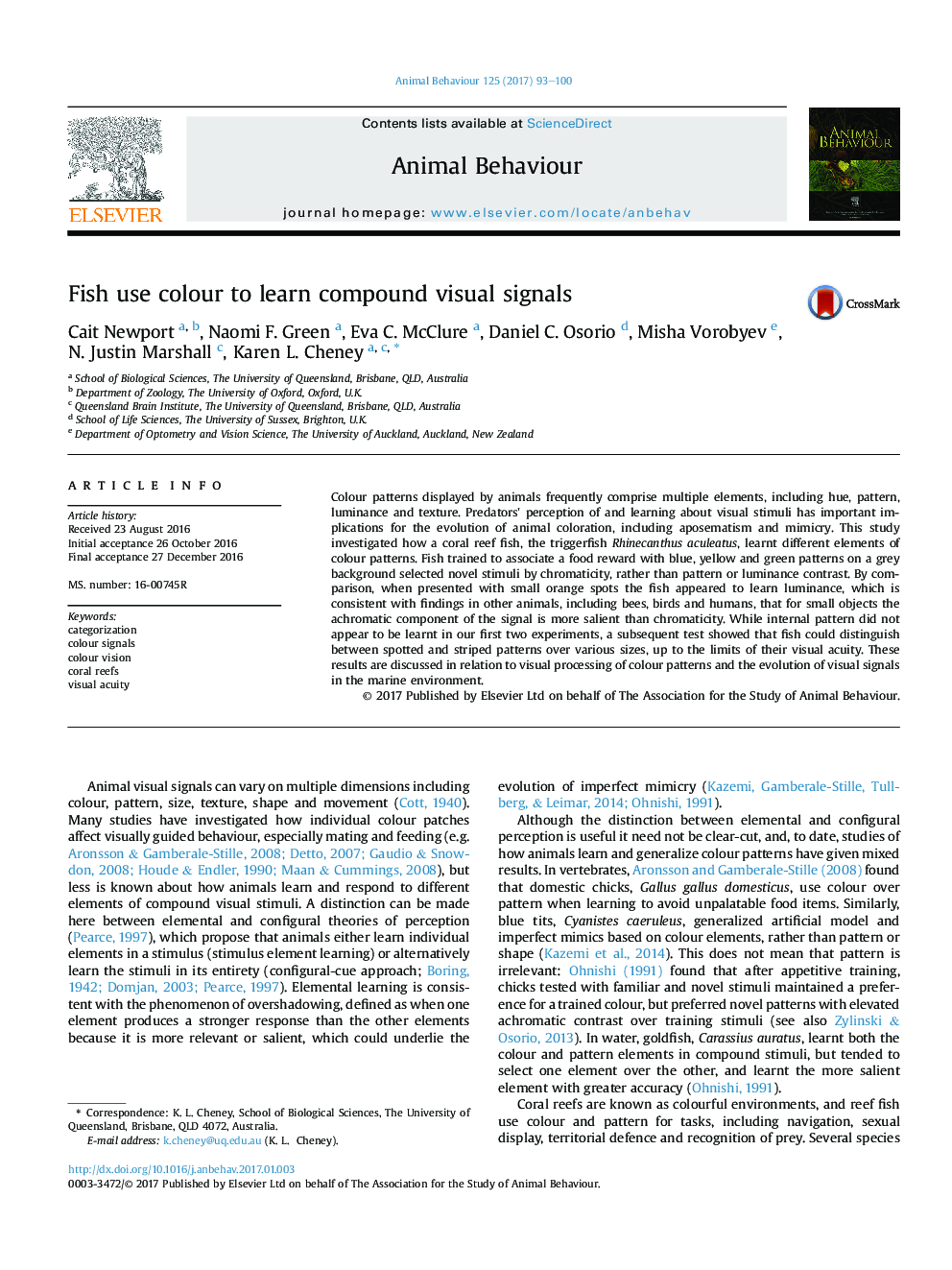| Article ID | Journal | Published Year | Pages | File Type |
|---|---|---|---|---|
| 5538554 | Animal Behaviour | 2017 | 8 Pages |
Abstract
Colour patterns displayed by animals frequently comprise multiple elements, including hue, pattern, luminance and texture. Predators' perception of and learning about visual stimuli has important implications for the evolution of animal coloration, including aposematism and mimicry. This study investigated how a coral reef fish, the triggerfish Rhinecanthus aculeatus, learnt different elements of colour patterns. Fish trained to associate a food reward with blue, yellow and green patterns on a grey background selected novel stimuli by chromaticity, rather than pattern or luminance contrast. By comparison, when presented with small orange spots the fish appeared to learn luminance, which is consistent with findings in other animals, including bees, birds and humans, that for small objects the achromatic component of the signal is more salient than chromaticity. While internal pattern did not appear to be learnt in our first two experiments, a subsequent test showed that fish could distinguish between spotted and striped patterns over various sizes, up to the limits of their visual acuity. These results are discussed in relation to visual processing of colour patterns and the evolution of visual signals in the marine environment.
Related Topics
Life Sciences
Agricultural and Biological Sciences
Animal Science and Zoology
Authors
Cait Newport, Naomi F. Green, Eva C. McClure, Daniel C. Osorio, Misha Vorobyev, N. Justin Marshall, Karen L. Cheney,
